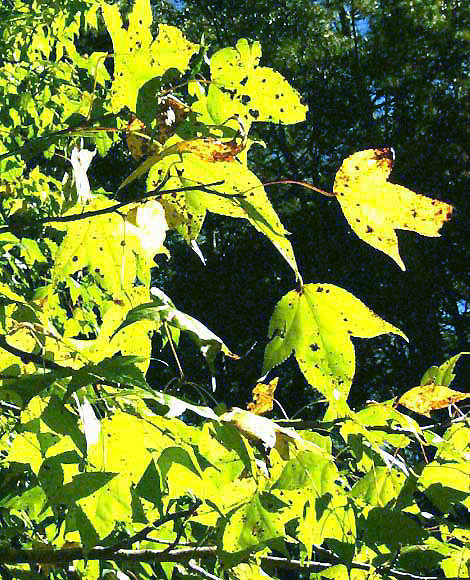Excerpts from Jim Conrad's
Naturalist Newsletter
from the December 17, 2007 Newsletter issued from Yerba Buena Clinic just outside Pueblo Nuevo Solistahuacan, Chiapas, MÉXICO
about 1740 meters in elevation, ± LAT. 17° 11' 27"N, LONG. -92° 53' 35"W
SWEETGUMS
Our Sweetgums are starting to turn a bit yellow, about like they would back in Kentucky in September. You can see this below:

When I see yellowing Sweetgum leaves glowing beneath such a splendidly blue sky I'm filled with a sense of nostalgia. Somehow sun-glowing Sweetgums represent a certain feeling that's been important during much of my life, the feeling of long September woods-walks in Kentucky, of sitting around my hermit campfire in late fall in Mississippi, etc.
Of course, it's not quite the same. For one thing, notice that a good number of the leaves in the picture are three-pointed.
You've seen that in our relict "sky islands" some plants are considered the exact same species found in eastern North America, some are different subspecies of the same species, and others are "sister species," which means that our species and the North American ones are regarded as having arisen from common ancestors. This dynamic reflects the fact that some organism groups evolve faster than others. Apparently Sweetgums evolve slowly while those of our species represented by sister species in the North evolve fast, and those being the same species as in the North but different subspecies evolve at an average rate.
Chiapas's Sweetgums are regarded as the very same species as occurs up North, Liquidambar styraciflua. However, I've often noticed that, on the average, northern plants tend to produce more five-pointed leaves while our Chiapan plants have more three-pointed leaves. Our Chiapan plants seem to be evolving toward a new three-pointed subspecies, but experts don't regard them as having evolved that far yet.